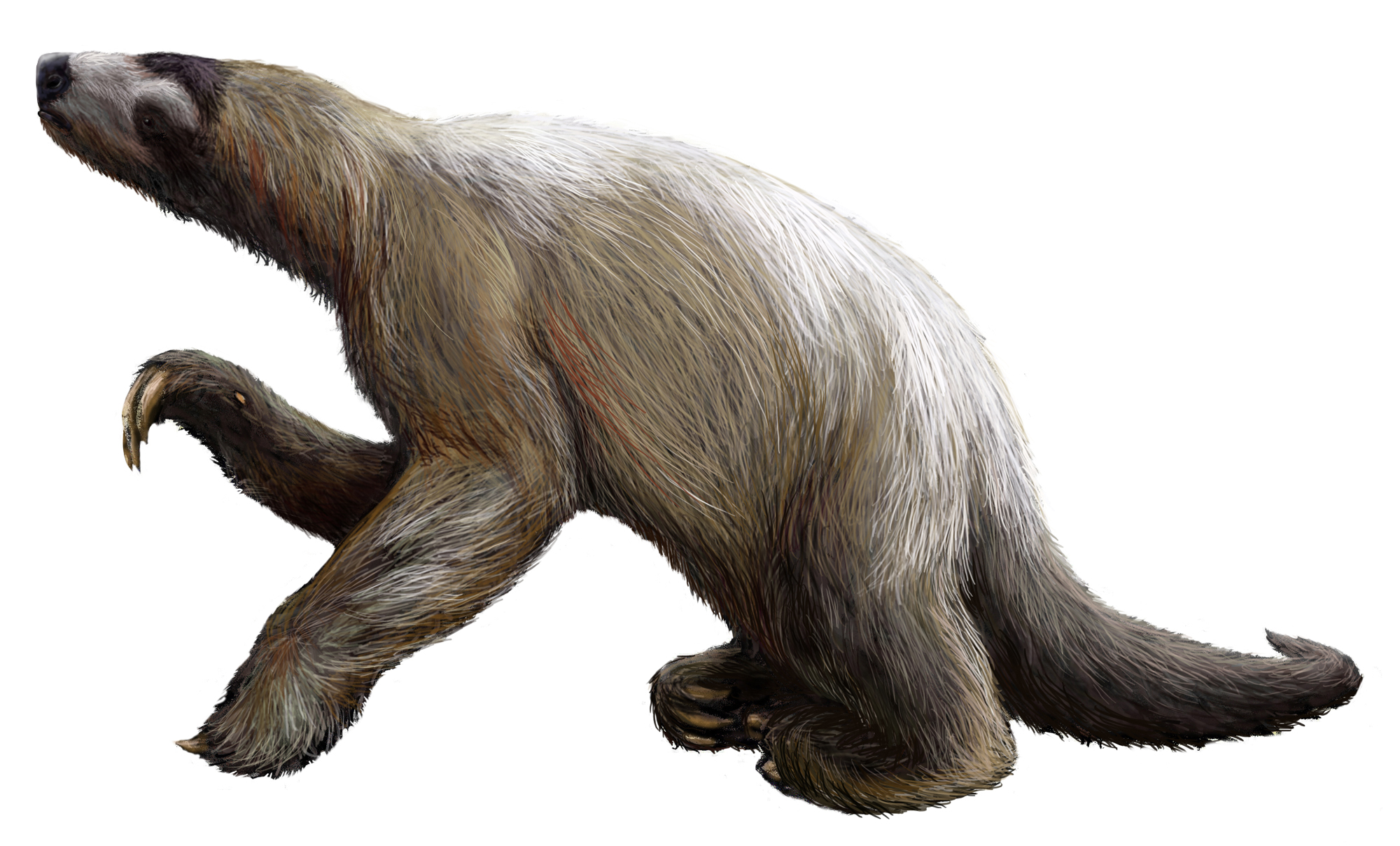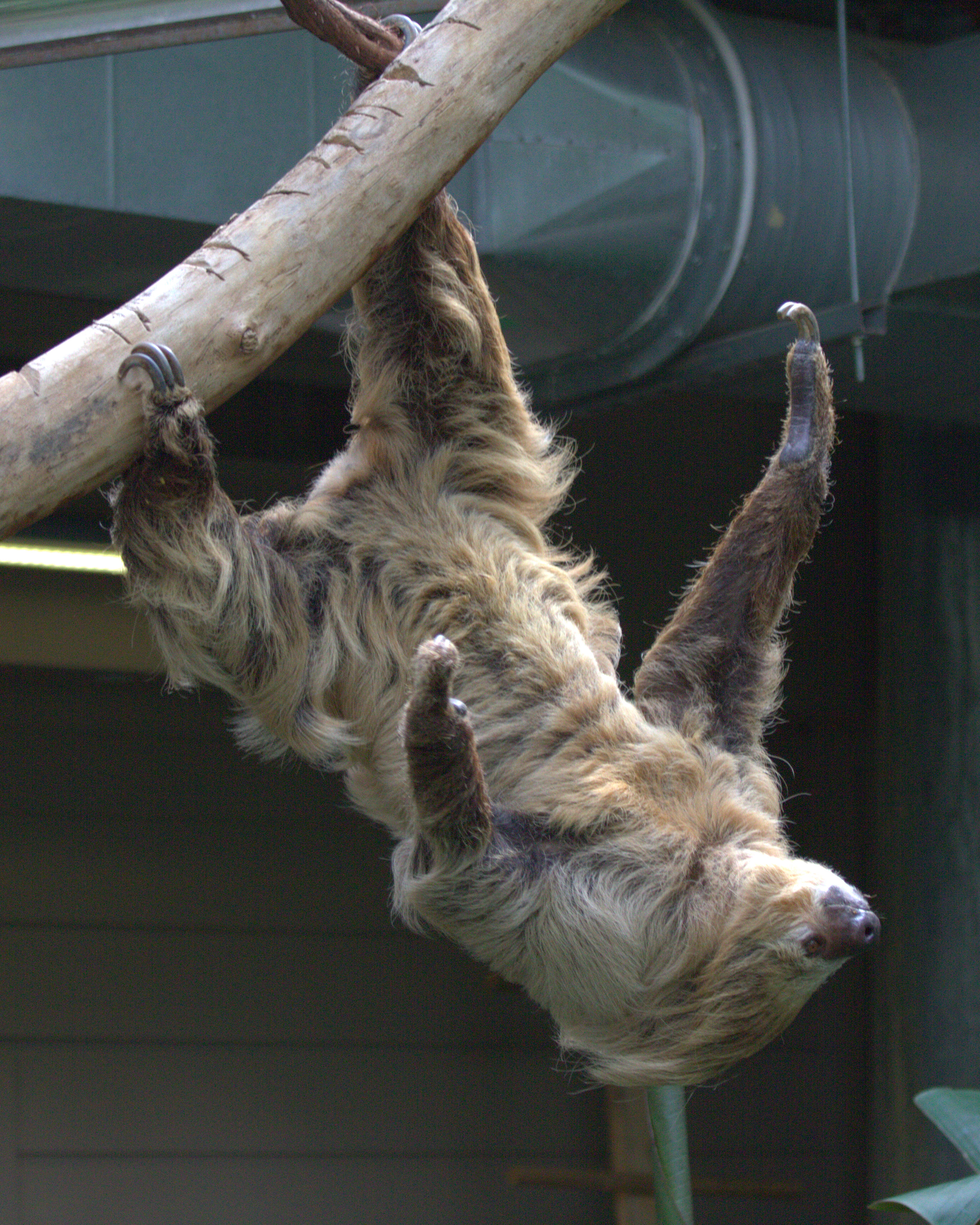|
Atlantogenata
Atlantogenata ("born around the Atlantic Ocean") is a proposed magnorder of placental mammals containing the cohorts or superorders Xenarthra and Afrotheria. These groups originated and radiated in the South American and African continents, respectively, presumably in the Cretaceous. Together with Boreoeutheria, they make up Placentalia. The monophyly In biological cladistics for the classification of organisms, monophyly is the condition of a taxonomic grouping being a clade – that is, a grouping of organisms which meets these criteria: # the grouping contains its own most recent comm ... of this grouping is supported by some genetic evidence. Alternative hypotheses are that Boreoeutheria and Afrotheria combine to form Epitheria (as generally supported by anatomical and other physiological evidence) or that Boreoeutheria and Xenarthra combine to form Exafroplacentalia or Notolegia. Updated analysis of transposable element insertions around the time of diverg ... [...More Info...] [...Related Items...] OR: [Wikipedia] [Google] [Baidu] |
Epitheria
Epitherians comprise all the placental mammals except the Xenarthra. They are primarily characterized by having a stirrup-shaped stapes in the middle ear, which allows for passage of a blood vessel. This is in contrast to the column-shaped stapes found in marsupials, monotremes, and xenarthrans. They are also characterized by having a shorter fibula relative to the tibia. Epitheria like Xenarthra and Afrotheria originated after the K-Pg boundary , with the placental diversification occurring within the first hundred thousand years after the K-Pg event and the first modern placental orders began appearing 2–3 million years later. Epitheres are one of the most successful groups of animals. The monophyly of Epitheria has been challenged by molecular phylogenetic studies. While preliminary analysis of a set of retroposons shared by both Afrotheria, and Boreoeutheria ( presence/absence data) supported the Epitheria clade, more extensive analysis of such transposable element inser ... [...More Info...] [...Related Items...] OR: [Wikipedia] [Google] [Baidu] |
Placentalia
Placental mammals ( infraclass Placentalia ) are one of the three extant subdivisions of the class Mammalia, the other two being Monotremata and Marsupialia. Placentalia contains the vast majority of extant mammals, which are partly distinguished from monotremes and marsupials in that the fetus is carried in the uterus of its mother to a relatively late stage of development. The name is something of a misnomer, considering that marsupials also nourish their fetuses via a placenta, though for a relatively briefer period, giving birth to less-developed young, which are then nurtured for a period inside the mother's pouch. Placentalia represents the only living group within Eutheria, which contains all mammals that are more closely related to placentals than they are to marsupials. Anatomical features Placental mammals are anatomically distinguished from other mammals by: * a sufficiently wide opening at the bottom of the pelvis to allow the birth of a large baby relative to ... [...More Info...] [...Related Items...] OR: [Wikipedia] [Google] [Baidu] |
Notolegia
Exafroplacentalia or Notolegia is a clade of placental mammals proposed in 2001 on the basis of molecular research. Exafroplacentalia places Xenarthra as a sister group to the Boreoeutheria (comprising Laurasiatheria and Euarchontoglires), thus making Afrotheria a primitive group of placental mammals (the group name roughly means "those which are not African placentals"). Classification However, this classification makes the autapomorphy (character shared only among Exafroplacentalia) dubious: it is hard to classify a group by the absence of a feature (in this case "not coming from Africa").Nishihara, H., Maruyama, S. & Okada, N. 2009. Retroposon analysis and recent geological data suggest near-simultaneous divergence of the three superorders of placental mammals. PNAS 106: 5235-40. Hence, several alternative hypotheses can be considered. Alternative hypotheses One alternative hypothesis is the Epitheria hypothesis: Another alternative hypothesis is the Atlantogenata h ... [...More Info...] [...Related Items...] OR: [Wikipedia] [Google] [Baidu] |
Xenarthra
Xenarthra (; from Ancient Greek ξένος, xénos, "foreign, alien" + ἄρθρον, árthron, "joint") is a superorder and major clade of placental mammals native to the Americas. There are 31 living species: the anteaters, tree sloths, and armadillos. Extinct xenarthrans include the glyptodonts, pampatheres and ground sloths. Xenarthrans originated in South America during the late Paleocene about 60 million years ago. They evolved and diversified extensively in South America during the continent's long period of isolation in the early to mid Cenozoic Era. They spread to the Antilles by the early Miocene and, starting about 3 million years ago, spread to Central and North America as part of the Great American Interchange. Nearly all of the formerly abundant megafaunal xenarthrans became extinct at the end of the Pleistocene. Characteristics Xenarthrans share several characteristics that are not present in other placental mammals, which suggest that xenarthrans desce ... [...More Info...] [...Related Items...] OR: [Wikipedia] [Google] [Baidu] |
Pilosa
The Order (biology), order Pilosa is a clade of xenarthran placental mammals, native to the Americas. It includes anteaters and sloths (which include the extinct ground sloths). The name comes from the Latin word for "hairy". Origins and taxonomy The Biogeography, biogeographic origins of the Pilosa are still unclear, but they can be traced back in South America as far as the early Paleogene (about 60 million years ago, only a short time after the end of the Mesozoic Era). The presence of these animals in Central America and their former presence in North America is a result of the Great American Interchange. Pilosans of the Caribbean, A number of sloths were also formerly present on the Greater Antilles, Antilles, which they reached from South America by some combination of oceanic dispersal, rafting or floating with the prevailing currents. Together with the armadillos, which are in the order Cingulata, pilosans are part of the larger superorder Xenarthra, a defining charact ... [...More Info...] [...Related Items...] OR: [Wikipedia] [Google] [Baidu] |
Boreoeutheria
Boreoeutheria (, "northern eutherians") is a magnorder of Placentalia, placental mammals that groups together superorders Euarchontoglires and Laurasiatheria. The clade includes groups as diverse as giraffes, Sus (genus), pigs, zebras, Rhinoceros, rhinos, canidae, dogs, felidae, cats, rabbits, mouse, mice, squirrels, bats, whales, dolphins, lemurs, and Simian, simians (Monkey, monkeys and apes). With a few exceptions,Exceptional clades whose males lack the usual boreoeutherian scrotum are Mole (animal), moles, hedgehogs, pangolins, some pinnipeds, rhinoceroses, tapirs, hippopotamuses, and cetaceans. male boreoeutherians have a scrotum, an ancestral feature of the clade. The sub-clade Scrotifera was named after this feature. Etymology The name of this magnorder comes from Ancient Greek words: * () meaning 'Boreas (god), north wind' or 'the North', * () meaning 'good', 'right', or 'true', * and () meaning 'beast'. Boreoeutherian ancestor The majority of earliest known fossi ... [...More Info...] [...Related Items...] OR: [Wikipedia] [Google] [Baidu] |
Laurasiatheria
Laurasiatheria (; "Laurasian beasts") is a superorder of Placentalia, placental mammals that groups together true insectivores (eulipotyphlans), bats (chiropterans), carnivorans, pangolins (Pholidota, pholidotes), even-toed ungulates (Artiodactyla, artiodactyls), odd-toed ungulates (Perissodactyla, perissodactyls), and all their extinct relatives (Pan-Euungulata, pan-euungulates). From systematics and phylogenetic perspectives, it is subdivided into order Eulipotyphla and clade Scrotifera. It is a sister group to Euarchontoglires with which it forms the magnorder Boreoeutheria. Laurasiatheria was discovered on the basis of the Molecular phylogenetics, similar gene sequences shared by the mammals belonging to it; no Anatomy, anatomical features have yet been found that unite the group, although a few have been suggested such as a small coracoid process, a simplified hindgut (reversed in artiodactyls), high intelligence, lack of grasping hands (though mimicry of grasping is observed ... [...More Info...] [...Related Items...] OR: [Wikipedia] [Google] [Baidu] |
Two-toed Sloth
''Choloepus'' is a genus of xenarthran mammals from Central and South America within the monotypic family Choloepodidae, consisting of two-toed sloths, sometimes also called two-fingered sloths. The two species of ''Choloepus'' (which means "lame foot" in Ancient Greek), Linnaeus's two-toed sloth (''Choloepus didactylus'') and Hoffmann's two-toed sloth (''Choloepus hoffmanni''), were formerly believed on the basis of morphological studies to be the only surviving members of the sloth family Megalonychidae, but have now been shown by molecular results to be closest to extinct ground sloths of the family Mylodontidae. Extant species Evolution A study of retrovirus and mitochondrial DNA suggests that ''C. didactylus'' and ''C. hoffmani'' diverged 6 to 7 million years ago. Furthermore, based on cytochrome c oxidase subunit I sequences, a similar divergence date ( years ago) between the two populations of ''C. hofmanni'' separated by the Andes has been reported. Th ... [...More Info...] [...Related Items...] OR: [Wikipedia] [Google] [Baidu] |
Three-toed Sloth
The three-toed or three-fingered sloths are arboreal neotropical mammals. They are the only members of the genus ''Bradypus'' (meaning "slow-footed") and the family Bradypodidae. The five living species of three-toed sloths are the brown-throated sloth, the maned sloth, the pale-throated sloth, the southern maned sloth, and the pygmy three-toed sloth. In complete contrast to past morphological studies, which tended to place ''Bradypus'' as the sister group to all other folivorans, molecular studies place them nested within the sloth superfamily Megatherioidea, making them the only surviving members of that radiation. Extant species Evolution A study of mitochondrial cytochrome b and 16S rRNA sequences suggests that '' B. torquatus'' diverged from '' B. variegatus'' and '' B. tridactylus'' about 12 million years ago, while the latter two split 5 to 6 million years ago. The diversification of ''B. variegatus'' lineages was estimated to have started 4 to 5 million years a ... [...More Info...] [...Related Items...] OR: [Wikipedia] [Google] [Baidu] |
Sloth
Sloths are a Neotropical realm, Neotropical group of xenarthran mammals constituting the suborder Folivora, including the extant Arboreal locomotion, arboreal tree sloths and extinct terrestrial ground sloths. Noted for their slowness of movement, tree sloths spend most of their lives hanging upside down in the trees of the tropical rainforests of South America and Central America. Sloths are considered to be most closely related to anteaters, together making up the xenarthran order Pilosa. There are six extant sloth species in two genera – ''Bradypus'' (three-toed sloths) and ''Choloepus'' (two-toed sloths). Despite this traditional naming, all sloths have three toes on each rear limb – although two-toed sloths have only two digits on each forelimb. The two groups of sloths are from different, distantly related families, and are thought to have evolved their morphology via parallel evolution from terrestrial ancestors. Besides the extant species, many species of ground sl ... [...More Info...] [...Related Items...] OR: [Wikipedia] [Google] [Baidu] |
Myrmecophagidae
The Myrmecophagidae are a family of anteaters. Two genera and three species are in the family, consisting of the giant anteater, and the tamanduas. The fossil '' Eurotamandua'' from the Messel Pit in Germany may be an early anteater, but its status is currently debated. The name is derived from the Ancient Greek words μύρμηξ (''múrmēx''), "ant", and φάγος (''phágos''), "eater". Characteristics Myrmecophagids are medium to large animals, with distinctively elongated snouts and long, narrow tongues. They have powerful claws on their toes, enabling them to rip open termite mounds and ant nests to eat the insects inside. They have no teeth, but produce a large amount of sticky saliva to trap the insects, as well as backward-pointing spines on their tongues. Ants and termites are almost their only food in the wild, and their primary source of water, although they sometimes also drink free-standing water, and occasionally eat fruits. Distribution Myrmecophagids are fou ... [...More Info...] [...Related Items...] OR: [Wikipedia] [Google] [Baidu] |





